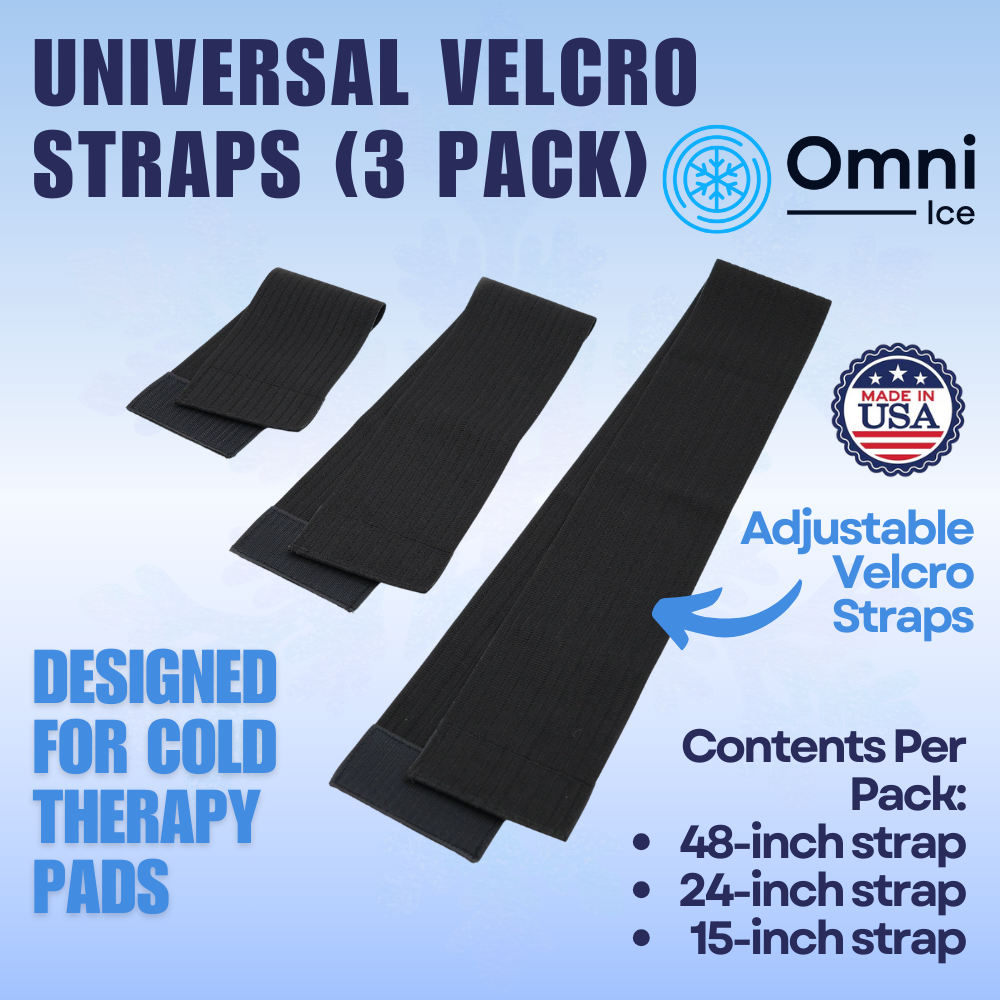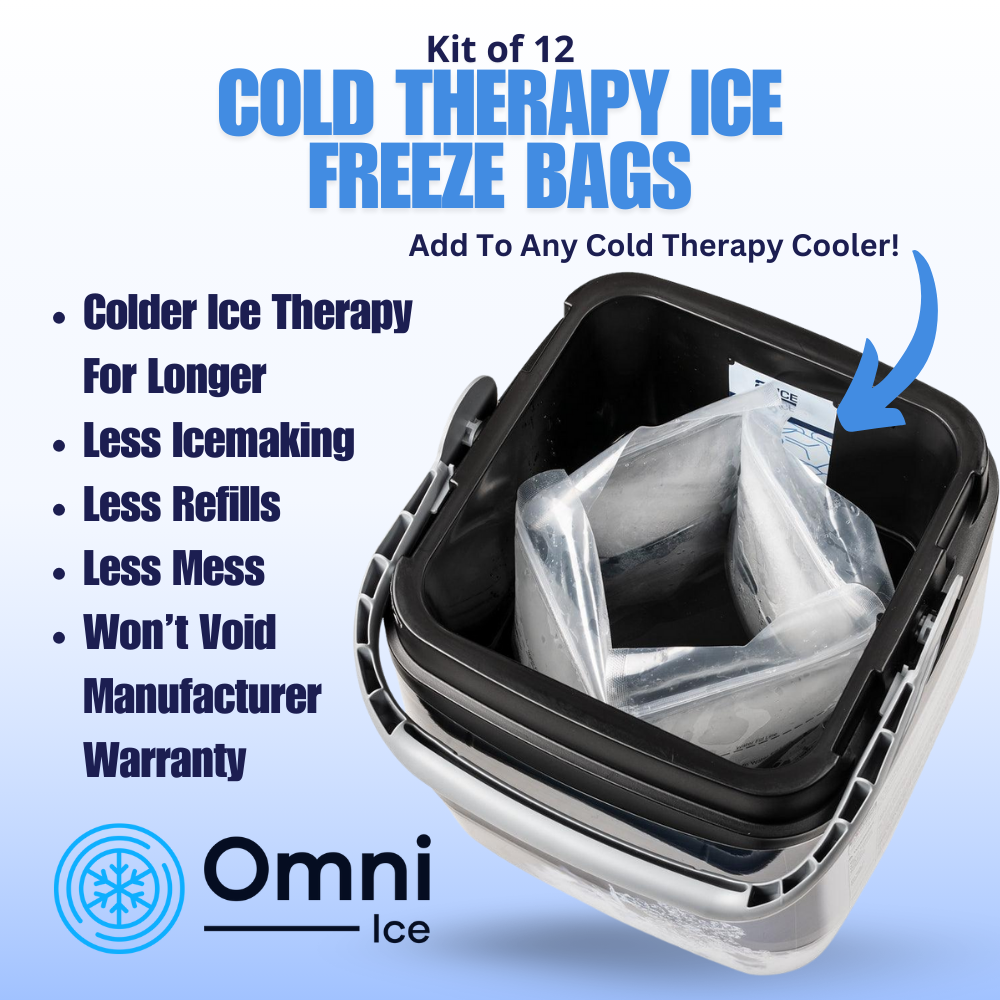Troubleshooting Your Breg Polar Care Glacier: Common Issues and Quick Fixes
The Breg® Polar Care Glacier is a premium cold therapy system designed to provide extended, quiet and adjustable cooling after surgery or injury. This comprehensive guide explains what the system is, why it is used, how to troubleshoot common issues and how to use it safely and effectively.
What Is the Breg Polar Care Glacier?
The Breg Polar Care Glacier is an advanced cold therapy system that circulates chilled water through an ergonomic pad to deliver controlled cryotherapy. Unlike traditional ice packs, the Glacier has a large ice and water reservoir that provides up to 13 hours of cooling with whisper‑quiet pump technology and a temperature control dial to customize the intensity. Premium WrapOn pads attach to the treated area and provide static compression while distributing cold evenly. Sterile dressings and accessory tubes allow you to adapt the therapy to different body parts and extend the hose length.
In clinical terms, cryotherapy involves applying cold to injured or surgical tissues to decrease tissue metabolism, blood flow and nerve conduction. Physiotherapists note that cold reduces edema formation, slows inflammatory processes and lessens pain by reducing nerve transmission. Most devices combine cold with compression to assist lymphatic drainage and further reduce swelling.
Because the Glacier is a prescription device, it must be recommended by a healthcare professional. Federal law restricts its sale, and My Cold Therapy requires customers to submit a valid prescription and acknowledge warnings before ordering. Users must always place an insulation barrier between the pad and skin and should never have direct skin contact with the cold pad.
Benefits & Risks
Benefits of Cold Therapy
- Reduced swelling and inflammation: Cooling vasoconstricts blood vessels, which limits bleeding and inflammatory mediators. Clinical reviews note that cryotherapy decreases edema formation and extravasation of blood.
- Less pain and narcotic use: Lowering tissue temperature diminishes nerve conduction and reduces pain signals, which can decrease the need for opioid medication. Patients often report improved comfort and earlier mobility.
- Improved range of motion: By controlling swelling and pain, cold therapy helps users move the treated joint sooner, supporting rehabilitation and postoperative recovery.
- Extended therapy time: The Glacier’s large reservoir offers up to 13 hours of cooling, meaning fewer refills than smaller machines or simple ice packs.
- Whisper‑quiet operation: A quiet pump allows patients to rest or sleep while using the machine.
- Customizable temperature: A temperature control dial lets you fine‑tune cooling intensity to suit your comfort level or physician’s recommendation.
Risks, Contraindications and Precautions
- Cryotherapy isn’t for everyone: Patients with diabetes, Raynaud’s disease, peripheral vascular disease, cold hypersensitivity, impaired circulation, or neuropathy should avoid cold therapy. Always consult your physician before use.
- Skin injury: Direct skin contact can lead to frostbite or skin damage. A sterile dressing or thin towel must cover the skin. Inspect the skin frequently and discontinue use if numbness, blotching or blistering occurs.
- Over‑cooling: Prolonged cooling can slow tissue healing. Typical guidelines suggest 10–20 minute sessions several times a day or as directed by your doctor. Extended continuous use should only occur under medical supervision, such as immediately post‑surgery.
- Impaired cognition or sensation: Individuals who cannot feel temperature (e.g., due to nerve damage or sedation) should not use cold therapy because they cannot detect adverse skin reactions.
- Circulatory issues: Cold therapy slows blood flow, so use caution if you have hypertension, heart disease or rely on good circulation for wound healing.
- Pregnancy and infants: Extra caution is advised for very young or elderly patients; consult a healthcare provider before use.
How It Works & Troubleshooting
Using the Glacier properly ensures safe and effective therapy. The following steps provide a structured approach for setup, operation and common troubleshooting:
- Gather supplies: You will need ice (preferably cubed or chunked), cool water, a sterile dressing (barrier), your prescribed WrapOn pad and the Polar Care Glacier unit.
- Fill the cooler: Remove the lid and add a mixture of ice and water. Large cubes last longer and help maintain cold temperature. Do not over‑fill; leave space for the pad to prime.
- Connect the pad: Lay the pad flat and connect the hose coupling to the machine. Ensure the male and female connectors click securely into place. Use the extension tube if you need extra length; note that the 4‑Foot Extension Tube fits Glacier, Cube and Cub units but not the Kodiak.
- Apply an insulation barrier: Place a sterile dressing or thin cloth over your skin before positioning the pad. This barrier prevents direct skin contact and reduces infection risk.
- Power on: Plug the unit into a grounded outlet and turn it on. Whisper‑quiet pump technology begins circulating cold water through the pad. Use the temperature dial to adjust cooling intensity.
Troubleshooting Common Issues
Even well‑designed devices may occasionally malfunction. The following quick fixes resolve most problems:
- No power or pump not running: Confirm the power cord is plugged into a working outlet and that the lid is secured. If the pump still doesn’t run, try a different outlet or check the power supply accessory and reset it. Do not operate the pump without water, as this can damage the motor.
- No water flow to pad: Ensure there is enough ice and water. Allow at least 10 minutes for the system to prime. Kinks or twists in the hose can block flow; straighten the hose and make sure the couplings are fully engaged. Placing the cooler on a raised surface relative to the pad helps gravity assist the flow.
- Pad not getting cold: Add more ice or larger cubes. The system requires a mixture of ice and water to transfer cold effectively. Check for air trapped in the line; disconnect the coupling slightly to release air, then reconnect. Verify that the temperature dial isn’t set too low.
- Straps too tight or discomfort: Over‑tightening the pad straps can restrict flow. Loosen the straps to relieve pressure and ensure proper circulation.
- Condensation or leaks: Some condensation is normal. If you notice water pooling, inspect the hose connections and pads for damage. Clean the foam filter cap periodically to prevent clogging and leaking.
- Running out of ice too quickly: Consider using Breg’s Omni Ice Freeze Bags or prepping extra ice in advance. These reusable bags maintain cold temperature longer and reduce the mess of melting cubes.
After each session, unplug the unit, disconnect the pad and empty the water from both the reservoir and pad. Drain and dry the pad thoroughly before storage. Never place the machine or power cord in water; clean the surfaces with mild soap and water. Regular cleaning prolongs the life of your cold therapy system.
When to Seek Professional Help
If you have persistent pain, swelling that worsens, unusual redness or numbness, stop using the device and contact your healthcare provider. Also call for technical support if the pump motor is noisy, power supply smells burnt, or the unit leaks despite troubleshooting. Remember that the Glacier is a medical device; following the manufacturer’s instructions and your doctor’s guidance ensures safe recovery.
How Long & How Often to Use It
Duration and frequency depend on the stage of healing and medical advice. General guidelines suggest applying cold for 10–20 minutes several times a day. Immediately after surgery or acute injury, many surgeons recommend continuous cold therapy for the first 24–48 hours, using a device like the Glacier because it maintains a constant temperature. Once bandages are removed, the Stone Clinic’s protocol advocates icing for 15 minutes on with 1 hour 45 minutes off throughout waking hours and avoiding icing during sleep.
Factors such as pad size, tissue depth, and individual tolerance influence how long you can apply cold. Research reviewed by Physiopedia indicates that 20–30 minutes of cryotherapy produces maximal cooling at a depth of 1–2 cm, but deeper tissues require longer durations. Always discuss timing with your surgeon or physical therapist. To avoid over‑cooling, set a timer and check your skin regularly.
The Glacier’s 13‑hour reservoir capacity makes it convenient for overnight use when supervised. However, you should never fall asleep with the pad directly on your skin, and long sessions require a low temperature setting and frequent skin checks. When in doubt, err on shorter sessions; you can always repeat as needed.
Who Should Use or Avoid the Glacier?
Suitable Candidates
- Patients recovering from orthopedic surgery (e.g., knee, shoulder, hip replacements) who need extended cold therapy to control swelling and pain.
- Athletes managing acute sprains or strains and seeking quicker return to play. Cold therapy combined with rest, compression and elevation is often called the RICE or PRICE protocol.
- People with chronic joint conditions such as arthritis or tendinopathy who experience flare‑ups. Controlled cooling provides temporary pain relief and may improve mobility.
Contraindicated Users
- Individuals with vascular disorders such as Raynaud’s disease, peripheral vascular disease or impaired circulation.
- People with diabetes or neuropathy, as reduced sensation can mask damage.
- Those with hypersensitivity to cold (cold urticaria or cryoglobulinemia) and those who develop hives or skin reactions when exposed to cold.
- Young children, older adults or cognitively impaired patients without supervision.
- Anyone with open wounds, infected areas or uncontrolled bleeding should avoid cold therapy until cleared by a doctor.
- Patients with high blood pressure or heart conditions should use cold cautiously and under medical supervision.
If you’re unsure whether cold therapy is appropriate for you, consult your physician or physical therapist. Never commence therapy solely based on online information.
Product Options & Pad Compatibility
The Glacier is part of Breg’s family of cold therapy systems. Understanding the differences between models helps you choose the right device and accessories for your needs. The table below compares key features of the Glacier, Cube and Kodiak units.
| Model | Therapy Duration* | Power Source | Noise Level | Special Features |
|---|---|---|---|---|
| Polar Care Glacier | Up to 13 hours | AC power | Whisper‑quiet pump【304616310283991†screenshot】 | Large reservoir, temperature control dial, compatible with WrapOn pads |
| Polar Care Cube | 6–8 hours | AC power | Quiet pump | Compact design, broad pad selection |
| Polar Care Kodiak | 6–8 hours | AC or battery pack (10–14 hour option) | Quiet pump | Intelli‑Flo pad technology; portable with optional battery |
*Therapy duration depends on ice quantity and ambient temperature. Longer sessions may require adding ice mid‑session.
Pad compatibility is another crucial factor. Breg Wrap‑On pads are designed for specific joints and come in multiple sizes. According to My Cold Therapy’s pad guide, the Glacier Wrap‑On pads feature an ergonomic design that provides exceptional coverage and patient comfort, and they connect seamlessly with the Glacier cold therapy system. Wrap‑On pads may be used with the Glacier, Cube and Cub units but not with Kodiak or Wave systems. A sterile dressing must always be used between the pad and skin.
The large selection includes Multi‑Use pads (for hips or thighs), knee pads (regular, large, XL), shoulder pads (regular and XL), ankle pads, hand/wrist pads and back pads. For example, the Multi‑Use XL pad measures 11.25 × 11.25 inches and comes with 34‑ and 15.5‑inch straps, while the regular knee pad measures 10.25 × 11.25 inches and has 11‑inch straps. When ordering replacement pads, verify the connector type; the Glacier uses a specific coupling that matches the Cube and Cub but is incompatible with the Kodiak.
Accessories further customize your therapy. The Dual Y Pad Connector lets you connect two Cube pads to one Cube machine—handy for bilateral knee treatments. Note that this Y‑connector is for the Cube and Glacier; Kodiak connectors are different and not interchangeable. Similarly, the 4‑Foot Extension Tube extends the hose for larger patients or remote placement; it fits Cube, Glacier and Cub units but not the Kodiak.
Comparisons & Alternatives
Breg’s Polar Care line isn’t the only option for cryotherapy. Here’s how the Glacier and its siblings compare with other common options:
- Ice packs and gel packs: Simple ice or gel packs are inexpensive and do not require electricity. They’re suitable for minor injuries but warm quickly and need frequent replacement. They also can’t maintain a consistent temperature and may not provide compression.
- Gravity‑fed devices: Systems like the Aircast Cryo Cuff use gravity to allow cold water to flow through cuffs. These units are lighter and don’t need electricity, but they lack adjustable temperature control and typically hold less ice, resulting in shorter therapy durations.
- Active compression systems: Devices that combine cold and pneumatic compression (e.g., GameReady or Breg Wave) provide alternating pressure to help move lymphatic fluid. They’re effective for reducing swelling but are more expensive and often used under professional supervision.
- Portable battery‑operated devices: The Breg Kodiak offers battery operation for 10–14 hours, making it ideal for travel or when you don’t have easy access to an outlet. However, it uses Intelli‑Flo pads that are not compatible with Glacier accessories.
When choosing a device, consider factors such as surgery type, mobility needs, budget and whether you need accessories like Y‑connectors or extension tubes. The Glacier’s long ice life and quiet operation make it excellent for home recovery, while the Cube is compact for occasional use and the Kodiak adds portability. For people looking for simple, low‑cost solutions, reusable ice bags or Omni Ice Freeze bags may suffice.
Frequently Asked Questions
Why won’t my Glacier pump circulate water?
First, confirm there is ice and water in the reservoir. Plug the unit into a working outlet and ensure the lid is closed; then wait 10 minutes for the system to prime. Check for kinks in the hose and make sure couplings are securely connected. If air is trapped, briefly disconnect and reconnect the pad to release it.
How can I make the pad colder?
Use larger ice cubes or frozen bottles, which melt more slowly and keep water colder. Maintain a high ice‑to‑water ratio and top off the ice as needed. Adjust the temperature dial to a cooler setting and ensure the pad’s strap isn’t too tight, which can restrict flow.
Can I use the Glacier overnight?
Many surgeons allow continuous cold therapy during the first night after surgery, but you should not sleep with the pad directly on your skin. Use the lowest comfortable setting and check your skin frequently. After the acute phase, follow an intermittent icing schedule—15 minutes on and at least 1 hour off.
Do I need a prescription?
Yes. Federal law restricts the sale of Breg cold therapy devices to prescription use. My Cold Therapy requires a valid prescription and a signed acknowledgement of warnings before shipping. Your physician will also advise on proper use.
What’s the difference between the Glacier and the Cube?
The Glacier has a larger reservoir and provides up to 13 hours of cooling, while the Cube lasts 6–8 hours. Both use AC power and offer quiet pumps, but the Cube is more compact. Accessories and pads for these two units are generally interchangeable; however, the Kodiak uses different Intelli‑Flo pads and connectors.
How do I clean the Glacier?
After each use, disconnect the power and hoses. Empty the reservoir and pad, then flush them with warm water and mild soap. Allow components to air dry completely before storing. Avoid immersing the electrical components in water and never operate the pump without water.
Can I use the Glacier on more than one joint at a time?
The Glacier itself connects to one pad at a time. However, Breg offers a Dual Y Connector for the Cube (compatible with Glacier pads) that allows two pads to be used simultaneously. For bilateral therapy, consider using two separate machines or consult your provider.
Sources
Authoritative references underpin this guide:
- Physiopedia – Cryotherapy for physiological effects, contraindications and duration recommendations.
- Johns Hopkins Medicine – Cold Therapy for safe application times and skin protection.
- The Stone Clinic – Icing Protocol for postoperative icing schedules and cautions
- NIH Review – Cold and Compression Therapy for the rationale and benefits of cold compression.
- My Cold Therapy – Breg Polar Care Glacier Collection for product features like whisper‑quiet pump, temperature control and wrap‑on pads.
- My Cold Therapy – Glacier Replacement Pads for pad compatibility and ergonomic design.
- My Cold Therapy – Dual Y Pad Connector for Y‑connector details and prescription acknowledgement.
- My Cold Therapy – 4 Foot Extension Tube for accessory compatibility and warnings.








